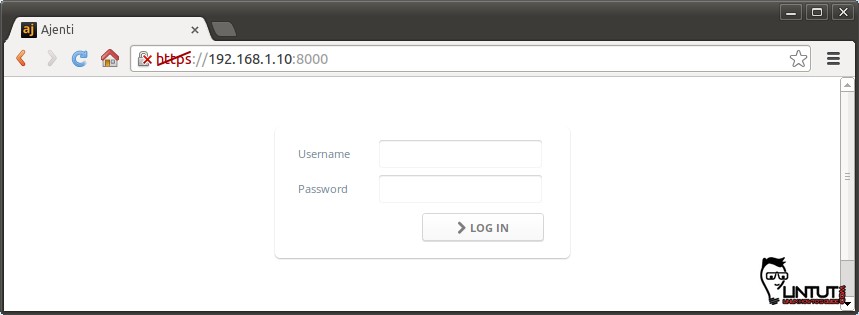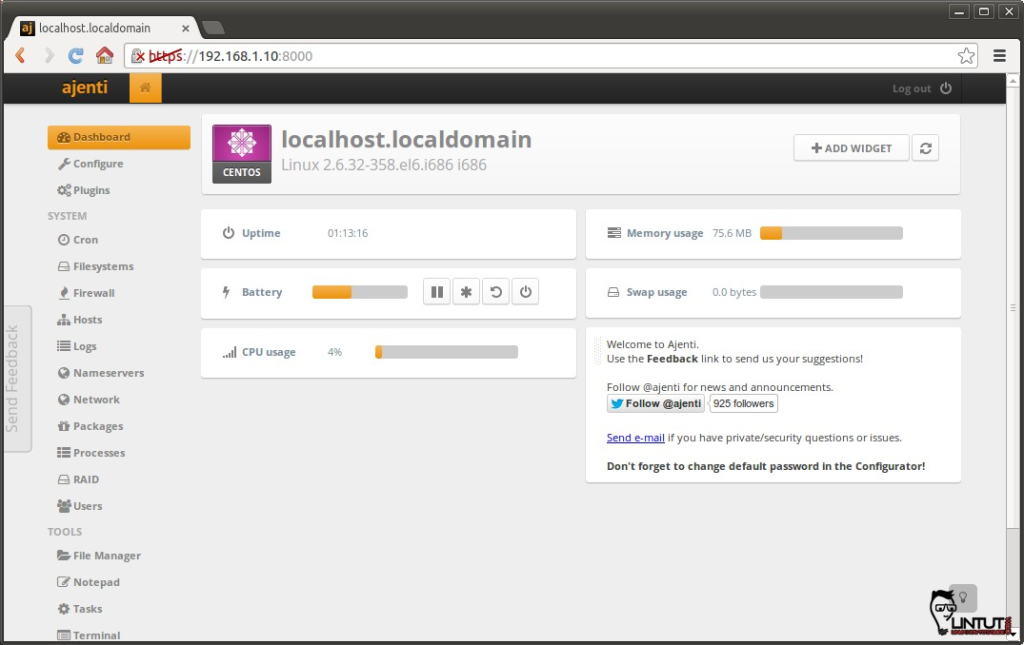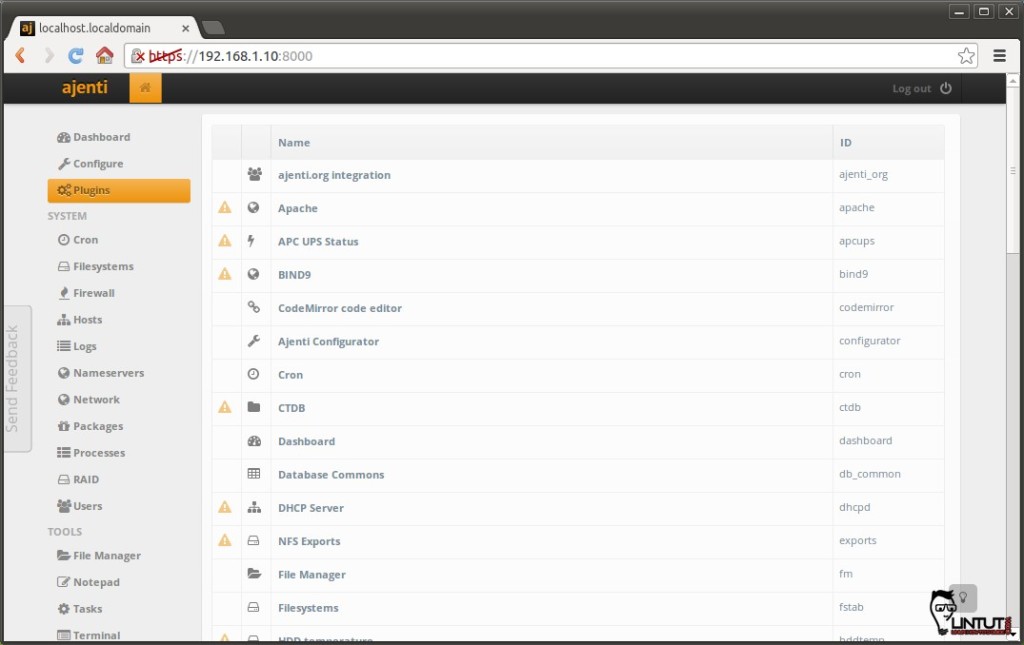Install Ajenti control panel on CentOS 6.5
Ajenti is a simple and easy to use admin panel that can be used to manage server tasks from any web browser a bit similar to the webmin module but what really caught my attention was GUI its really nice and everyone’s gonna agree once they install and use it . The features of this admin panel can be extended by the use of plugins which can help make any task easier for a server admin .
Using this tool you can check CPU resource usages, DNS, firewall configuration, manage cron jobs, backup/recovery settings and more. All you need to do is install the relevant plug-ins and start managing your servers.
Today I’m going to show you how to install ajenti on CentOS 6.1/6.2/6.3/6.4/6.5 linux .
Install Ajenti control panel on CentOS 6.1/6.2/6.3/6.4/6.5 linux
Ajenti requires to enable EPEL Repository and RPMforge. Now, download and install Ajenti’s official repository:
# wget http://repo.ajenti.org/ajenti-repo-1.0-1.noarch.rpm rpm -i ajenti-repo-1.0-1.noarch.rpm
Install Ajenti using YUM command:
# yum install ajenti
Start Ajenti service:
# service ajenti restart
The panel will be available on HTTPS port 8000. The default username is root, and the password is admin.
If you want to access the Ajenti web interface from remote systems, just allow the port number through your firewall.
# iptables -A INPUT -p udp -m state --state NEW --dport 8000 -j ACCEPT # iptables -A INPUT -p tcp -m state --state NEW --dport 8000 -j ACCEPT
Save iptables rule:
# service iptables save
and restart iptables:
# service iptables restart
Now navigate to https://server-ip-address:8000/ from your browser.

- Ajenti login screen

- Ajenti dashboard

- Ajenti plugins
See also:
- Best opensource Cpanel aletrnative
- How to install KloxoMR on CentOS 5.x/6.x 32 or 64-bit
- How to install zPanel in Centos 6.4
- How to install ajenti in Ubuntu 12.10/12.10/13.04/13.10 server
- Install kloxo on RHEL/CentOS 5.x
- Install EHCP on Ubuntu server 12.04/12.10/13.04/13.10
- Install VestaCP on RHEL/CentOS 5.x/6.x and Debian/Ubuntu Linux








Thank you! Keep with tutorials for web hosts, peace.